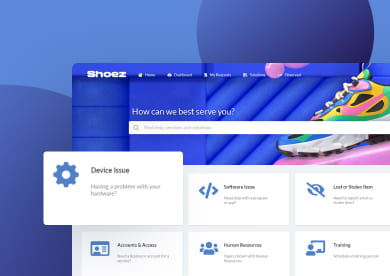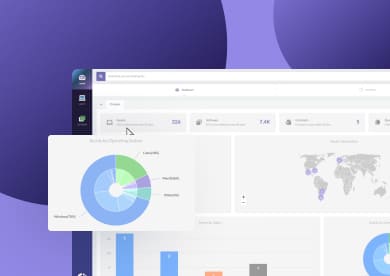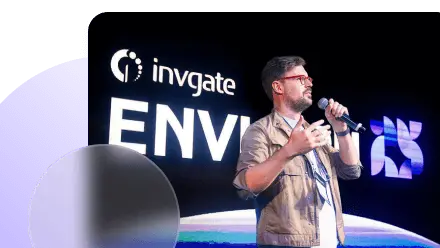With cyber threats on the rise and IT environments growing more complex, organizations need reliable Endpoint Management software to ensure security, compliance, and operational efficiency.
There are many endpoint solutions out there, so to help you out, we’ve put our extensive experience in IT Management and security into analyzing and narrowing down a list of the best platforms. We paired this with reviews and expert opinions to bring you the most informed recommendations.
This article explores what Endpoint Management software is, our top picks for 2025, and why a comprehensive approach — including IT Asset Management — is your path to success.
Let’s get started!
What is Endpoint Management software?
Endpoint Management software provides centralized control over all network-connected devices, including desktops, laptops, mobile devices, and IoT endpoints. It allows IT teams to automate Patch Management, enforce security policies, track assets, and streamline software deployments. These tools help organizations reduce security risks, improve compliance, and minimize downtime by ensuring all endpoints are up-to-date and properly configured.
There are different types of Endpoint Management solutions, which can make choosing the right one confusing. At its most basic, effective Endpoint Management systems should include:
- Device discovery and inventory – Identifies all endpoints connected to the network.
- Patch Management – Automates updates to fix security vulnerabilities.
- Remote control and troubleshooting – Enables IT teams to diagnose and fix issues remotely.
- Security enforcement – Applies policies like encryption, access controls, and antivirus management.
- Software deployment and configuration – Ensures devices have the necessary applications and settings.
Common types of Endpoint Management solutions include:
- Unified Endpoint Management (UEM): Manages desktops, mobile devices, and IoT under one platform.
- Mobile Device Management (MDM): Focuses on securing and controlling smartphones and tablets.
- Client Management tools (CMT): Primarily used for managing traditional desktops and laptops.
- Endpoint detection and response (EDR): Specializes in identifying and mitigating security threats.
Of course, choosing the right solution depends on an organization's needs, infrastructure, and security priorities. Our curated list is a great place to start.
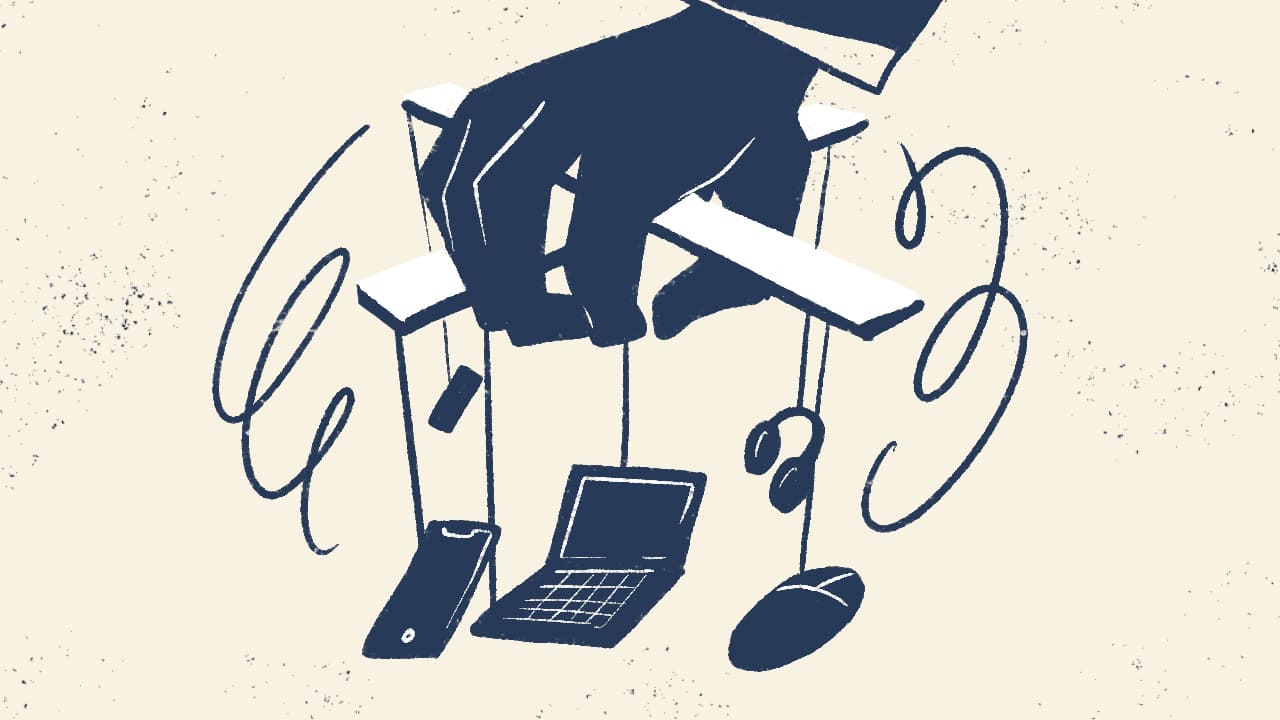
Best Endpoint Management software for 2025
Below, we break down the best Endpoint Management systems for 2025 based on in-depth research and industry expertise.
1. InvGate Asset Management

With InvGate Asset Management, organizations can have a complete IT Asset Management and Endpoint Management strategy to better control their IT environments. Available as an on-premise or cloud-based solution, it integrates with tools like Microsoft Intune and VMware to enhance endpoint visibility and security.
Top features:
- Comprehensive asset discovery: Identifies all hardware and software assets to eliminate shadow IT.
- Automated software tracking: Flags outdated software for patching and security updates.
- License optimization: Identifies unused licenses for cost-saving opportunities.
- Compliance automation: Generates audit reports for regulatory adherence.
- Seamless integrations: Works alongside Endpoint Management tools for a complete IT security solution.
Best for: Organizations that require robust asset tracking and optimization alongside Endpoint Management.
Pricing: InvGate Asset Management offers flexible pricing models based on the number of assets managed, with scalable options for businesses of all sizes. For more details, you need to request a quote.
2. Microsoft Intune
Microsoft Intune is a cloud-based solution designed to manage and secure corporate devices and applications across various operating systems.
Top features:
- Unified Endpoint Management: Covers Windows, macOS, iOS, and Android devices.
- Mobile Application Management: Controls data access at the application level.
- Security and compliance enforcement: Applies security policies and conditional access rules.
- Integration with Microsoft 365: Enhances security within the Microsoft ecosystem.
Best for: Businesses already using Microsoft services, looking for seamless integration with Microsoft 365 and Azure.
Pricing details: Available through Microsoft Enterprise Mobility + Security (EMS) plans or as a standalone subscription.
Deployment and integrations: Cloud-based solution designed for easy deployment and scalability. It natively integrates with Microsoft Defender, Azure Active Directory, and third-party security solutions.
Reviews: 4.3 Score in Gartner Peer Insights
"It has worked well to deploy on newly setup machine but when it comes it migrating a currently active machine into Intune, it would be very fimicky where it would not always enroll properly to being extremely delayed when it works.“
User review from Gartner (IT support Specialist)
3. VMware Workspace ONE
VMware Workspace ONE is a unified platform that blends endpoint security with Virtual Desktop (VDI) Management. It allows zero-trust enforcement of physical devices.
Top features:
- AI-powered automation: Detects and mitigates threats in real-time.
- Remote Workforce Management: Ensures secure access for remote employees.
- Zero-trust security model: Strengthens security across endpoints.
- Integration with VMware Horizon: Supports virtual desktop infrastructure (VDI).
Best for: Ideal for hybrid IT environments balancing physical and virtual workloads.
Pricing details: Subscription-based pricing with tiered plans for different business needs.
Deployment and integrations: Available as a cloud, hybrid, or on-premise. Integrates with VMware Carbon Black, ServiceNow, and Okta.
Reviews: 4.0 Score in G2
“Excellent and generally self-explanatory profile upkeep. The device details page has an almost overwhelming quantity of information. Fantastic integration opportunities are available”
User review from G2 (Computer & Network Security)
4. IBM Security MaaS360
IBM Security MaaS360 strengthens endpoint security, simplifies Compliance Management, and provides real-time threat detection. It uses IBM Watson to predict threats and automate compliance for regulated industries, including risk scoring and containerization for BYOD environments.
Top features:
- AI-driven security insights: Predicts and prevents security threats.
- Mobile Device Management: Covers smartphones, tablets, and laptops.
- Identity and access control: Enforces secure authentication.
Best for: Organizations looking for AI-enhanced endpoint security and Compliance Management.
Pricing details: Subscription-based model with various tiers based on features and endpoint count.
Deployment and integrations: Cloud-native platform with flexible deployment options. Compatible with Microsoft Azure, Splunk, and third-party SIEM tools.
Reviews: 4.4 Score in Gartner Peer Insights
"Best tool for automatic device management and threat management, we have integrated with IBM Watson that helps to make efficient data driven decisions “
User review from Gartner Peer Insights (Audit Manager)
5. ManageEngine Endpoint Central
ManageEngine is a cost-effective, SMB-friendly platform. It includes Patch Management and remote troubleshooting across diverse OS environments.
Top features:
- Patch Management: Keeps systems secure with automated updates. Supports patching for 850+ third-party apps (e.g., Adobe, Zoom) out of the box.
- Remote troubleshooting: Helps IT teams resolve issues quickly.
- Software deployment: Streamlines application rollouts across devices.
Best for: SMBs and enterprises needing an all-in-one Endpoint Management tool.
Pricing details: Offers a free edition for small businesses and tiered pricing for enterprises.
Deployment and integrations: Supports cloud and on-premise deployments. Integrates with ServiceNow, Active Directory, and security solutions.
Reviews: 4.6 Score in Capterra
“Overall, it was just OK. Our price got increased nearly 14% which combined with poor support and not great UI, was enough to get us to look elsewhere. The patching and Endpoint Management piece of the software was more than adequate though.”
User review from Capterra (Systems administrator)

6. Ivanti Endpoint Manager
Ivanti Endpoint Manager (IEM) converges Endpoint Management with IT asset lifecycle control. It offers self-healing automation tailored for large-scale enterprises. Its key differential lies in unified ITAM (IT Asset Management) and UEM (Unified Endpoint Management) workflows.
Top features:
- Automated Device Management: Enforces security policies and software updates.
- Self-healing automation: Detects and fixes endpoint issues proactively.
- Software distribution: Ivanti Endpoint Manager allows for the creation and distribution of software packages across the network.
- Remote control and diagnostics: IT administrators can troubleshoot and resolve issues on endpoints from a centralized console.
Best for: Enterprises needing alignment between IT operations (ITOM) and security teams.
Pricing: Custom quotes (starts at ~$12/endpoint/month).
Deployment and integrations: Hybrid or on-premise; integrates with ServiceNow, Splunk, and Tanium.
Reviews: 4.3 Score in Gartner Peer Insights
"Overall, EPM is easy to use and added functionality to our environment BUT the vendor was not the best partner. We found the consultant who helped us setup EPM at first was not very knowledgeable on the other products and was not very forthcoming.”
User review from Gartner Peer Insights (Project Manager - IT Services)
7. Symantec Endpoint Security
Symantec (now part of Broadcom) Endpoint Security is a threat-centric Unified Endpoint Management (UEM) platform that combines Endpoint Management with Symantec’s enterprise-grade threat prevention engines. It stands out with its behavioral analytics and CloudSOC integration, enabling real-time threat hunting and proactive security measures.
To get features beyond basic security (like advanced patching, Asset Management, or broader IT automation), you typically need to buy separate "add-on" suites, which increases the overall cost.
Top features:
- Advanced threat protection: Defends against malware and zero-day attacks.
- Centralized policy enforcement: Streamlines security across all endpoints.
- Cloud-based Management console: Enables remote monitoring and response.
Best for: Enterprise clients needing unified endpoint protection and management.
Pricing details: Starts at $3.50/endpoint/month (volume discounts available).
Deployment and integrations: Cloud or on-premise; integrates with Broadcom SOC tools, Splunk, and Palo Alto Cortex.
Reviews: 4.5 Score in Gartner Peer Insights
"It was a really good experience, and the customer support was good, zero-day detection capability is top notch. Simple and it won't affect the overall performance of the system.” Dislike: “Limited OS support and high budget"
User review from Gartner Peer Insights (EDR analyst)
8. Cisco Meraki Systems Manager
Cisco Meraki Systems Manager is a network-aware Mobile Device Management (MDM) tool that leverages Cisco’s SD-WAN infrastructure to optimize endpoint performance and security. It integrates seamlessly with Cisco Meraki's cloud-managed Wi-Fi access points and security solutions. One of its standout features is the ability to tie endpoint health to network telemetry.
Top features:
- Zero-touch deployment: Simplifies onboarding of new devices.
- Granular security policies: Manages access controls and device compliance.
- Enterprise Mobility Management: Unifies control over mobile, desktop, and IoT devices.
Best for: Organizations using Cisco Meraki networks seeking unified IT/network insights. In general, those needing a strong Mobile Device Management (MDM) solution with cloud-based administration.
Pricing details: Bundled with Meraki licensing (~$5/endpoint/month).
Deployment and integrations: Cloud-only; integrates with Cisco Umbrella, Splunk, and Zscaler.
Reviews: 4.5 Score in G2
“Meraki MX appliances offer a robust, cloud-managed solution with advanced security features and ease of use. However, their cost, reliance on cloud services, and potential performance limitations may be of concern for some organizations.”
User review from G2 (Site Reliability Engineer)
9. Tanium Endpoint Management
Tanium is a real-time visibility platform that offers converged IT operations and security workflows tailored for global enterprises. It provides subsecond endpoint querying at scale, capable of supporting over 500,000 devices. Its one of the fastest options out there: it has fast querying capabilities for immediate insights and actions across vast IT environments.
Top features:
- Real-time endpoint monitoring: Detects security threats instantly.
- Incident response automation: Reduces downtime from security breaches.
- Scalability: Manages thousands of endpoints with minimal latency.
Best for: Companies with large-scale infrastructure that need quick compliance checks and incident response.
Pricing details: Enterprise pricing with custom quotes based on business needs.
Deployment and integrations: On-premise or hybrid; integrates with ServiceNow, Splunk, and CrowdStrike.
Reviews: 4.2 Score in Capterra
“Tanium provided our business unit the ability to efficiently manage our endpoints and ensure compliance in a diverse IT landscape managed by different stakeholders (...) it met our needs well.” Dislikes: “Tanium's module-based licensing means it was difficult to get all the features we wanted without purchasing some modules for one or two features.”
User review from Capterra (Factory Excellence Leader)
What to look for in a robust IT Asset Management system?
While Endpoint Management software is necessary to maintain security and compliance for all devices in your network, it becomes even more effective when combined with a full-scale IT Asset Management (ITAM) solution.
ITAM gives you complete visibility over your IT assets, streamlines software license tracking, and enhances security through automated asset discovery. A unified approach helps identify security risks associated with unauthorized devices and outdated software. Endpoint Management can then take immediate action to mitigate these risks, ensuring that all devices comply with security policies.
InvGate Asset Management is the perfect solution for an integrated IT security strategy. It provides:
- Automated asset discovery to identify all connected devices.
- Software License Management to prevent compliance violations.
- Integration with Endpoint Management tools for a unified approach.
- Detailed reporting and analytics for better decision-making.
When you integrate ITAM with Endpoint Management, you can avoid the following:
- Blind spots: Missing devices and shadow IT due to lack of asset visibility.
- Inefficiencies: Manual asset tracking leading to errors and delays.
- Security gaps: Unpatched software increasing vulnerability risks.
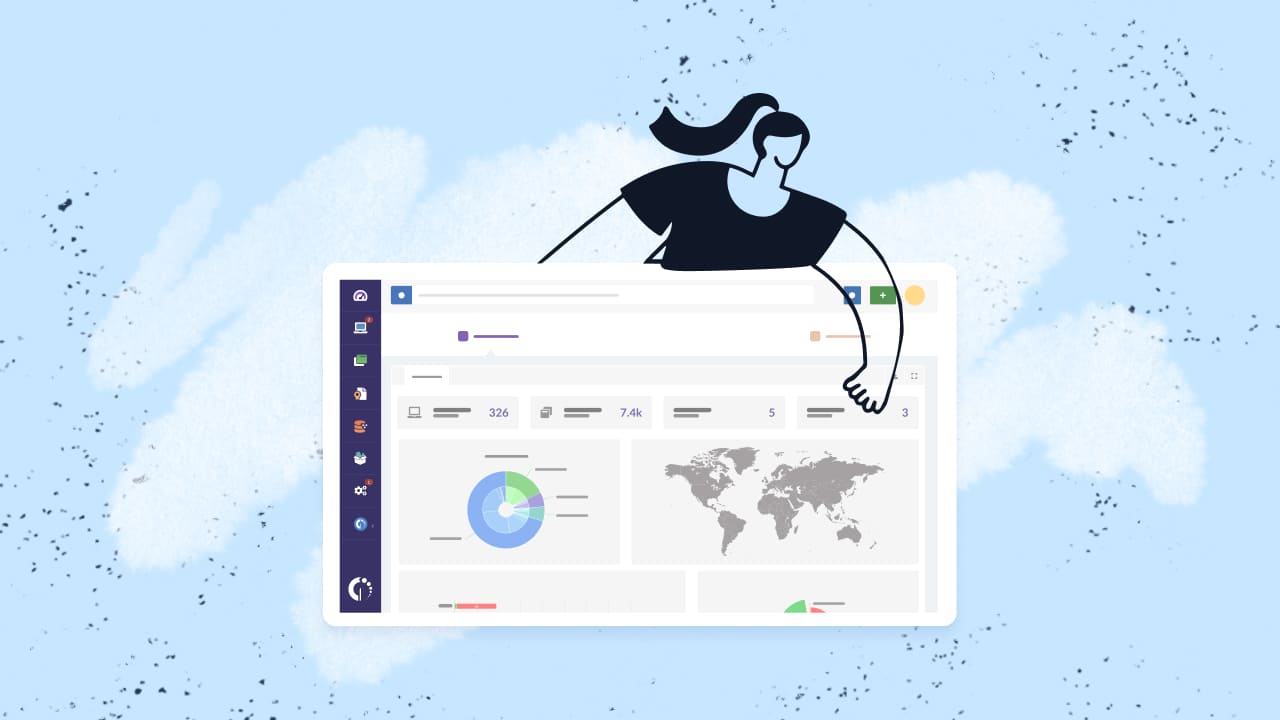
To sum up
So there you have it — a rundown of some of the best Endpoint Management solutions available. Each tool offers unique strengths to enhance security, reduce costs, and improve efficiency.
However, managing endpoints in isolation can lead to security gaps, compliance risks, and inefficiencies.
That's why we suggest integrating IT Asset Management (ITAM) to enhance your Endpoint Management approach. You can combine InvGate Asset Management with tools like Intune and VMware for better interoperability and flexibility. It's a growing trend that allows IT departments to handle a wide range of devices more effectively.
Interested in seeing it for yourself? You can sign up for a 30-day free trial and explore the features firsthand!
